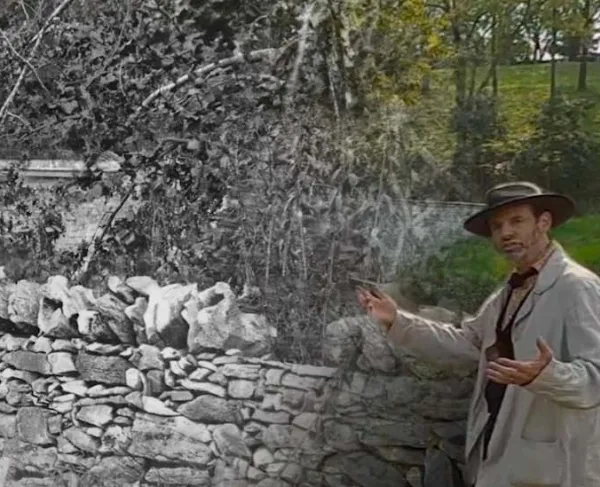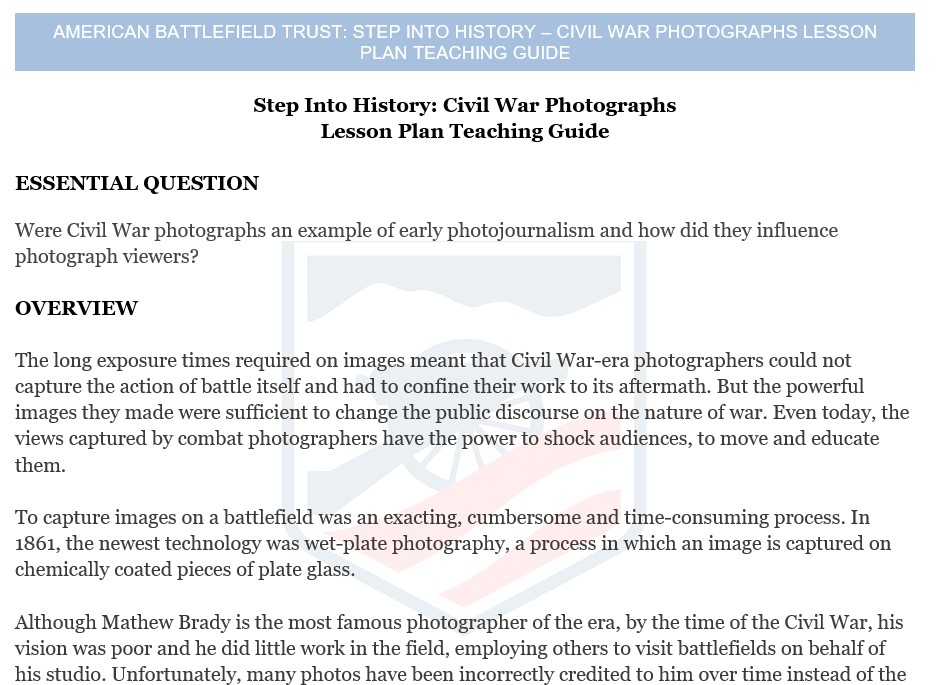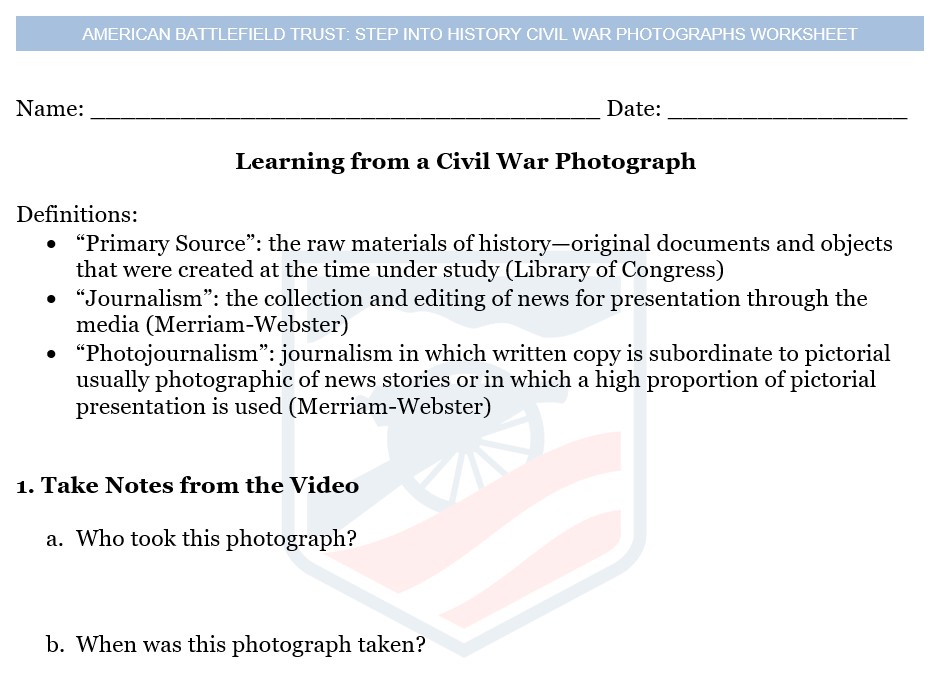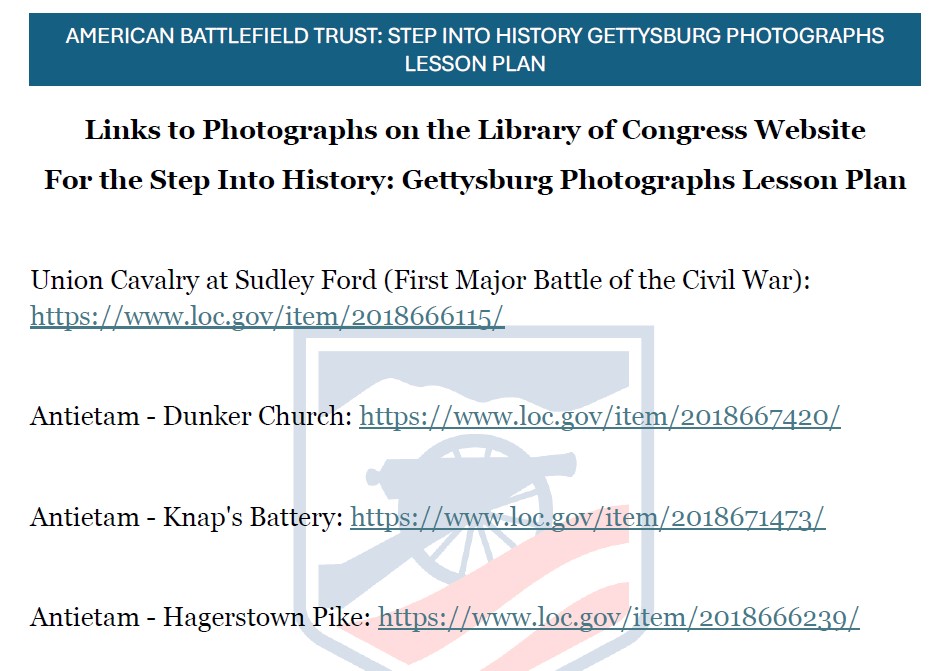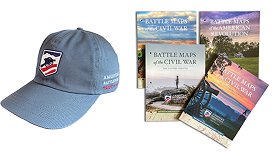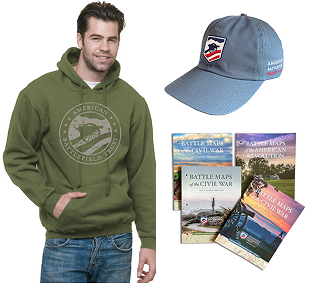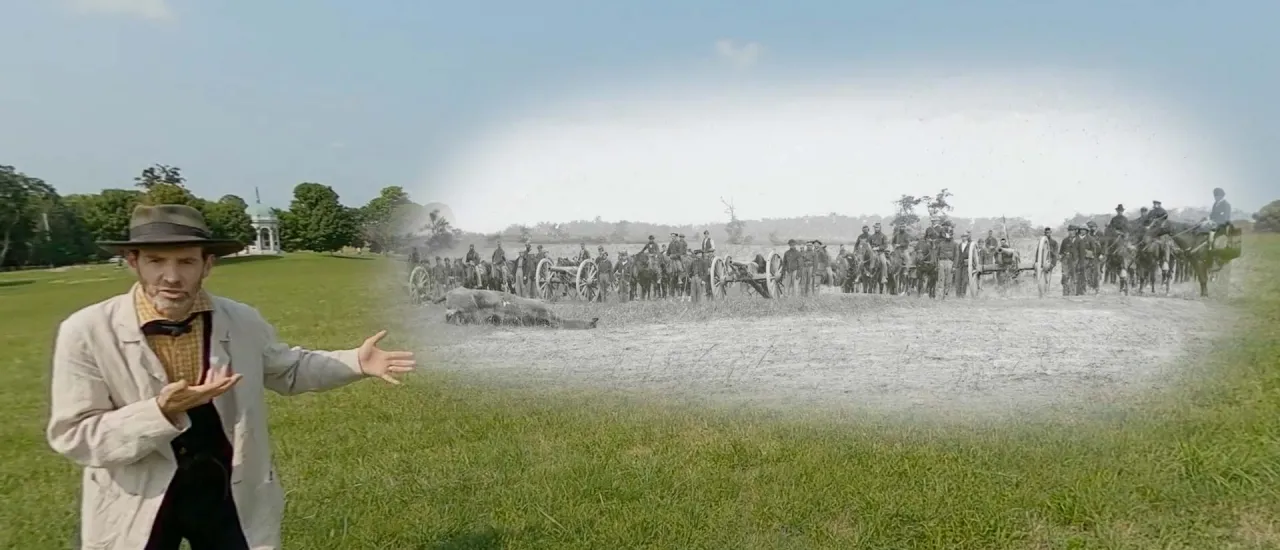
Step Into History: Civil War Then & Now Lesson Plan
A lesson plan for use in middle and high school classrooms.
The long exposure times required on images meant that Civil War-era photographers could not capture the action of battle itself and had to confine their work to its aftermath. But the powerful images they made were sufficient to change the public discourse on the nature of war. Even today, the views captured by combat photographers have the power to shock audiences, to move and educate them.
To capture images on a battlefield was an exacting, cumbersome and time-consuming process. In 1861, the newest technology was wet-plate photography, a process in which an image is captured on chemically coated pieces of plate glass.
Although Mathew Brady is the most famous photographer of the era, by the time of the Civil War, his vision was poor and he did little work in the field, employing others to visit battlefields on behalf of his studio. Unfortunately, many photos have been incorrectly credited to him over time instead of the actual artist, including images by Alexander Gardner and Timothy O’Sullivan. The photographs that Brady, Gardner, O’Sullivan and others created were often displayed in galleries, bringing scenes of camps and battlefields to the home front and becoming an early example of photojournalism during war.
This Lesson Plan can be used as a prepared resource by following this curriculum plan which aligns to NCSS and Common Core Standards.
This Lesson Plan's assets can also be used on their own as supplemental resources. The display format is prepared for easy access, exploring, and learning.
Step Into History Learning Module
Upon completion of this lesson, the students will be able to:
1. Knowledge
- Understand some of the influence of photographs during the Civil War
2. Comprehension/Application/Analysis
- Examine Civil War photographs and read a primary source to analyze the effects of the imagines on people in the 1860s.
3. Evaluation
- Consider how photography during the Civil War can be examples of war photojournalism and still shapes our understanding of the historic conflict.
Check out the Lesson Plan Teaching Guide for more instructions on using the prepared Lesson Plan.
Lesson Plan Primary Source Activity:
- Watch the In4Minutes: Civil War Photography video to gain contextual knowledge.
- Introduce the definitions for “journalism” and “photojournalism”
- “Journalism”: the collection and editing of news for presentation through the media (Merriam-Webster)
- “Photojournalism”: journalism in which written copy is subordinate to pictorial usually photographic of news stories or in which a high proportion of pictorial presentation is used (Merriam-Webster)
- Distribute the primary source worksheet and point out that photographs are visual primary sources to discover and study.
- Select a Step Into History Video (see options on Lesson Plan Page) to watch as a class or divide students into groups to view different videos; students can use the worksheet questions in Section 1 to take notes from the video.
- Read a primary source related to the Step Into History Video; there are two primary sources on the Lesson Plan Page. Both are reviews of gallery displays of Mathew Brady’s photograph collections. (You may want to have students studying the Antietam photos specifically study the primary source review of those images.)
- Have students fill out Section 2 of their worksheet from the written primary source.
- It may be helpful for students to view the photograph(s) again while filling out Section 3 of their worksheet.
- Invite the students to share their findings or their reflections from Part 3 in a classroom discussion.
OPTIONAL HOMEWORK/ASSESSMENT/ADDITIONAL ACTIVITIES:
Option 1: Civil War Photography
Learn more about the process of creating photographs during the Civil War. Read the articles 10 Fact: Civil War Photography and Photography and the Civil War.
Have students write a letter as though they are a photographers’ assistant and describe to a friend the process of staging and taking photographs in a Civil War camp or battlefield.
Option 2: Modern Photojournalism
Encourage students to select a school or family event and produce a photojournalism project, telling a perspective and story of the event through their images. The photos can be printed and displayed or shared in a PowerPoint.
Common Core State Standards- ELA & History/Social Studies
Grades 6-8
- CCSS.ELA-LITERACY.RH.6-8.6
- Identify aspects of a text that reveal an author's point of view or purpose (e.g., loaded language, inclusion or avoidance of particular facts).
- Integration of Knowledge and Ideas:
- CCSS.ELA-Literacy.RH.6-8.7
- Integrate visual information (e.g., in charts, graphs, photographs, videos, or maps) with other information in print and digital texts.
- CCSS.ELA-LITERACY.RH.6-8.8
- Distinguish among fact, opinion, and reasoned judgment in a text.
- CCSS.ELA-Literacy.RH.6-8.7
Grades 9-10
- Key Ideas and Details:
- CCSS.ELA-LITERACY.RH.9-10.1
- Cite specific textual evidence to support analysis of primary and secondary sources, attending to such features as the date and origin of the information.
- CCSS.ELA-LITERACY.RH.9-10.2
- Determine the central ideas or information of a primary or secondary source; provide an accurate summary of how key events or ideas develop over the course of the text.
- CCSS.ELA-LITERACY.RH.9-10.1
Grades 11-12
- Key Ideas and Details:
- CCSS.ELA-LITERACY.RH.11-12.2
- Determine the central ideas or information of a primary or secondary source; provide an accurate summary that makes clear the relationships among the key details and ideas.
- CCSS.ELA-LITERACY.RH.11-12.3
- Evaluate various explanations for actions or events and determine which explanation best accords with textual evidence, acknowledging where the text leaves matters uncertain.
- CCSS.ELA-LITERACY.RH.11-12.2
- Integration of Knowledge and Ideas:
- CCSS.ELA-Literacy.RH.11-12.7
- Integrate and evaluate multiple sources of information presented in diverse formats and media (e.g., visually, quantitatively, as well as in words) in order to address a question or solve a problem.
- CCSS.ELA-Literacy.RH.11-12.7
Social Studies - National Council for the Social Studies
- Theme 2: Time, Continuity and Change
- Theme 3: People, Places and Environments
- Theme 8: Science, Technology and Society
This Lesson plan
contains the following:
3 Activities | 17 Resources
Audience: Middle school | High school
